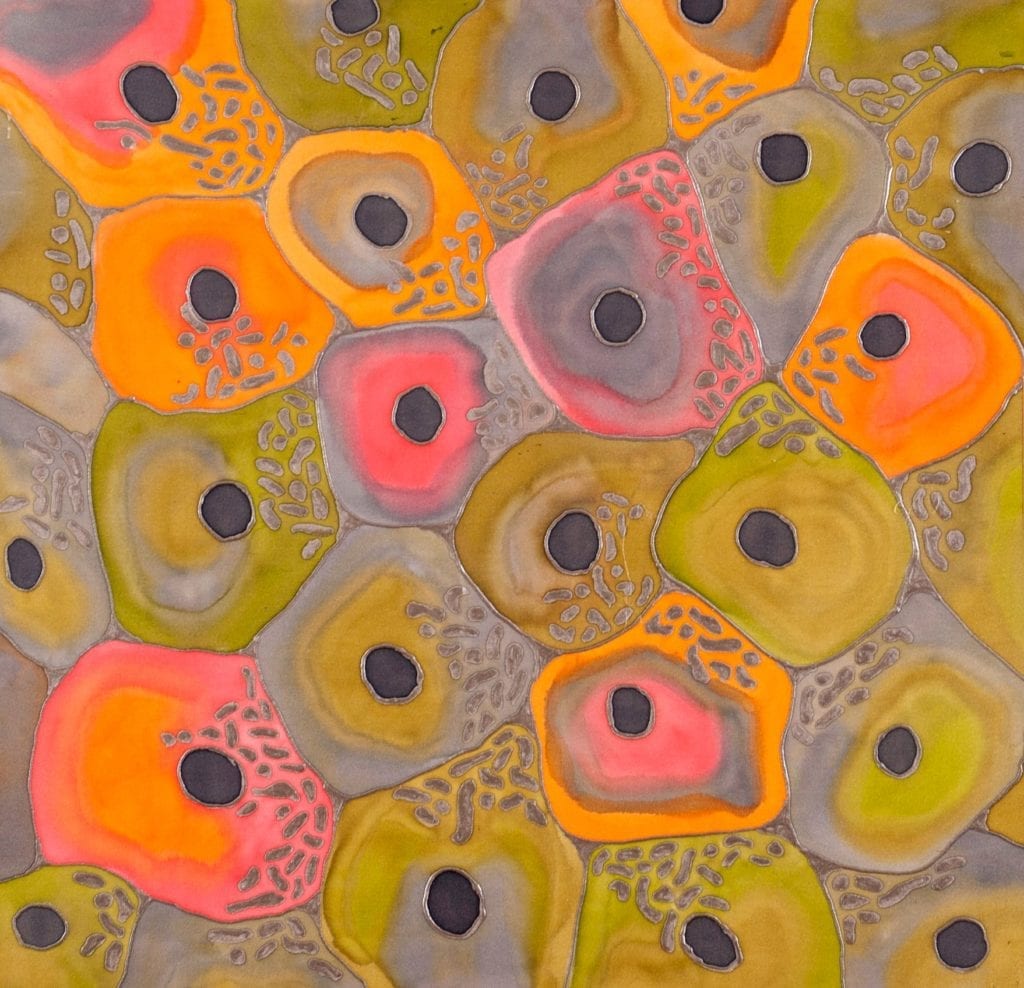Theresa Danna
Burbank, California, United States
 |
| Bioblasts. Credit: Odra Noel. CC BY-NC |
Before the Internet, if I had a pain in my chest, I would assume it was gas and then burp and move on with my day.
After the Internet, if I have a pain in my chest, I panic and think, “That’s one of the five warning signs of a heart attack!”
However, I do not fit the current definition of a “cyberchondriac,” obsessively searching the Internet for symptoms and diagnoses. Rather, I have fallen victim to what I call “incidental cyberchondria.” I am referring to those instances when you are reading a legitimate article online and then creeping around the sides of the article — sometimes even interrupting the middle of an article — are ads with alarming headlines like:
This Deadly Bacteria Is EVERYWHERE!
10 Signs of Stroke: Don’t Ignore! This Information Could Save Your Life!
Is Your Microwave Killing You?
12 Cancer-Causing Foods You Eat Every Day
As humans, we instinctively monitor our environment constantly to determine if any situation is safe. It is a survival technique1 and some advertisers take advantage of it more than others. Fear sells.
Fear-inducing ads related to health are not new. As far back as the 1920s, sales of Listerine mouthwash soared after the company conjured fear of “halitosis” by elevating the relatively benign condition to a medical issue associated with shame and social rejection.2
Hypochondria — also known as “illness anxiety” and defined as unwarranted worry about undiagnosed disease — is also not new. The condition’s origin dates back to Hippocrates, who believed that the area of the body just below the rib cage (the hypochondria region) emitted black bile that caused diseases of the body, particularly digestive problems, and also diseases of the mind, especially anxiety and depression.3
Even before the Internet, a case of “mass statistical hypochondria”4 in the United States was reported by The New York Times in 1976, when the National Center of Health Statistics released information about a 5.2% increase in cancer deaths over a one-year period. The ensuing panic included a suggestion that a “cancer bomb” had polluted the environment with lethal toxins. The article concluded that such hysteria could be avoided if organizations that release health statistics provide perspective instead of stating numbers out of context.
It is that lack of perspective in today’s Information Age that has escalated hypochondria. Depending on what source you read, anywhere from 60% to 90% of the population has sought diagnostic information from the Internet. Seeking online medical information in itself is not a problem; the issue is that the Internet content tends to present worst-case scenarios without taking into consideration the individual reader’s health history and lifestyle. As a result of this blanket of information without context, as many as 75% of people searching benign symptoms have at least once interpreted the Web results to mean that they most likely had a disease, according to a study conducted by Microsoft.5 Muscle twitches were assumed to be Lou Gehrig’s disease and headaches were immediately associated with brain tumors.
My own risk of cyberchondria is heightened because two family members did indeed die young from missed diagnoses of serious medical conditions. For my thirty-one-year-old niece who visited the hospital emergency department several times for migraine headaches and was sent home each time with a pain reliever without any diagnostic tests, her headaches were in fact caused by a brain tumor, which she died from within months of seeking treatment. And, for my thirty-four-year-old brother-in-law who was told by his doctor that he just had a flu and was sent home to rest, his heartburn was in fact a blood clot that killed him the day after seeing his doctor. Thus, those rare — but nonetheless real — situations are always in the back of my mind whenever one of those intrusive, alarmist ads appears on my computer screen. So how do I manage living with incidental cyberchondria?
I tell myself, “Yes, it’s possible that my symptom points to a serious condition, but at this time it’s not probable. The odds are in my favor.” Obviously, I would not ignore a symptom that worsened over time. However, most of the time, the symptom goes away, either on its own or after I use an over-the-counter remedy (such as an anti-gas tablet) or a natural treatment (such as massage or acupressure).
History has shown us that with each new technology invented, there are both benefits and disadvantages. Our challenge as humans is to establish balance between them. I, for one, am willing to risk being exposed to potential cyberchondria triggers, if doing so means I can also enjoy the benefits of modern technology.
References
- Fleming, Amy. “The fear factor: how should we deal with alarmist health reporting?” The Guardian. Nov 27, 2017. https://www.theguardian.com/lifeandstyle/2017/nov/27/fear-factor-worry-alarmist-health-reporting-medical-scare-stories
- Clark, Laura. “How halitosis became a medical condition with a ‘cure’.” Smithsonian.com.
Jan 29, 2015. https://www.smithsonianmag.com/smart-news/marketing-campaign-invented-halitosis-180954082/ - Bound, Fay. “Historical keyword: hypochondria.” The Lancet 367 Jan 14, 2006: 105. https://www.thelancet.com/pdfs/journals/lancet/PIIS0140-6736(06)67948-8.pdf
- “Statistical Hypochondria.” The New York Times Archives Feb 13, 1976: 31. https://www.nytimes.com/1976/02/13/archives/statistical-hypochondria.html
- Senelick, Richard C. “Cyberchondria: how the Internet is making us paranoid about health.” HuffPost, The Blog. May 11, 2011 (updated Jul 11, 2011). https://www.huffpost.com/entry/cyberchondria-you-can-cat_b_859085
THERESA DANNA’s formal education includes a bachelor’s degree in communications/journalism, master’s degree in professional writing/nonfiction, and substantial course work in psychology. Her varied work experience includes medical editor, massage therapist, and artist model. You can read her essays and articles at www.theresadanna.net.
Spring 2019 | Sections | Personal Narratives

Leave a Reply